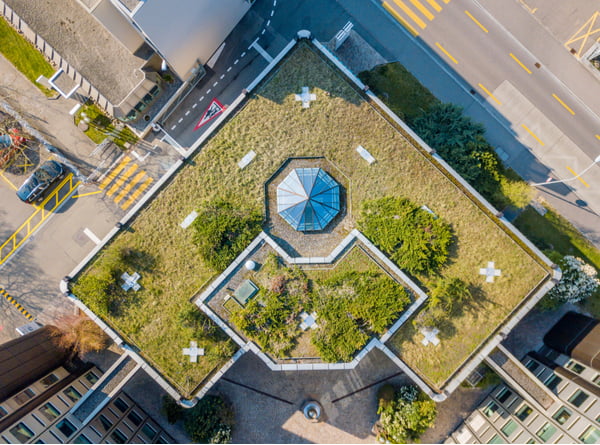What Are The Considerations For Designing Green Roofs And Walls?

Hola folks! Today we gonna talk about something super cool, super stunning, and the one that always fascinated me. Yes, you guessed it right! We are gonna talk about “Rooftop Garden”.
Have you ever thought about turning your boring, plain, and mundane rooftop into an oasis of calmness, greenery, and tranquility? Heck! Yes! Rooftop gardens can do the trick. Apart from adding a splash of greenery to your concrete jungle, a rooftop garden can also provide shade, insulation, and can help reduce air pollution.
So, let's quickly dive into the key considerations that one should bear in mind while designing a rooftop garden.
1. Structural Capacity: First and foremost, it's crucial to assess whether your rooftop can support the weight of the garden and its components. The weight of soil, plants, furniture, and other accessories can take a toll on the roof and can result in structural damage if not taken into account.
2. Wind Exposure: Rooftops are more exposed to strong winds as compared to gardens at the ground level. Thus, it's vital to assess the wind exposure and select plants and furniture accordingly. Moreover, too much exposure to wind can cause the soil to dry up faster, leading to water retention problems for the plants.
3. Water Supply:Water supply plays a significant role in maintaining a rooftop garden. One should have access to facilities like water pipes, rainwater harvesting systems, or any other sources to meet the watering needs of the plants. In the absence of a water supply, the plants won't survive for long.
4. Sunlight Availability: Sunlight is the life-force of plants. Hence, it's crucial to assess the duration of sunlight exposure on your rooftop. Based on the duration, select plants that require partial or full sunlight exposure and plan their positioning correspondingly.
5. Drainage System: A proper drainage system is vital to avoid waterlogging and prevent structural damages in the long run. A faulty drainage system can lead to seepage of water into the roof, damaging the ceiling and walls beneath it.
6. Access Points: The rooftop garden should have easy access points for maintenance, cleaning, and replenishing water. The plants and furniture shouldn't block the access points, making it difficult for maintenance personnel to access them whenever required.
7. Type of plants: The selection of plants depends on factors like wind, sunlight exposure, and the amount of maintenance required. Based on these, you can opt for plants that best suit your rooftop garden. Some popular plants that are generally suitable are succulents, perennial flowers, shrubs, herbs, and vegetables.
8. Furniture: Lastly, the rooftop garden should have comfortable and durable furniture that aligns with your overall theme and provides a cozy sitting area.
Designing a rooftop garden is a daunting task, but with proper planning and assistance from a professional gardener, you can convert your boring rooftop into a stunning garden.
FAQ
Q. How much does it cost to build a rooftop garden?
A. The cost of building a rooftop garden depends on the size, materials used, and the plants and furniture selected. Typically, it costs around $10 to $25 per square foot.
Q. Can a rooftop garden help insulate my house?
A. Yes, a rooftop garden can provide insulation and help in reducing cooling and heating costs.
Q. Can I grow vegetables in my rooftop garden?
A. Yes, you can opt for vegetable plants that require partial or full sunlight exposure and proper drainage.
Q. Do I need professional assistance for designing a rooftop garden?
A. It's always advisable to seek professional assistance for designing a rooftop garden. They can help assess the structural capacity, wind exposure, and water supply and guide you in selecting plants and furniture.
There you go, guys! Hope these key considerations prove to be valuable in your journey of creating a stunning rooftop garden. Happy Gardening!



Post a Comment for "What Are The Considerations For Designing Green Roofs And Walls?"